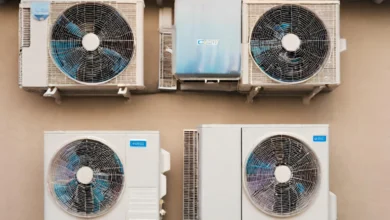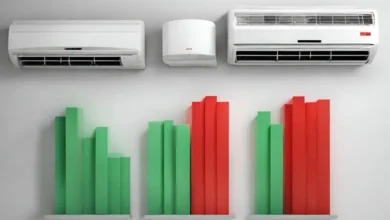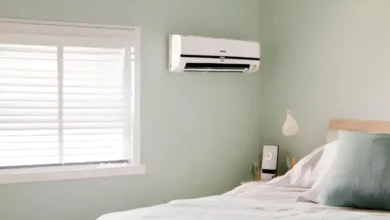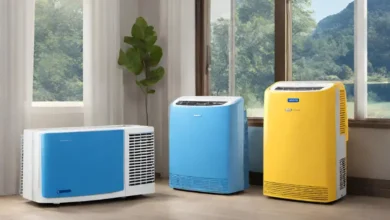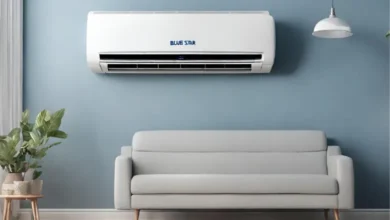Energy-Efficient Strategies in Air Conditioner Operation

In the relentless pursuit of comfort during scorching summer days, air conditioners emerge as indispensable companions. Yet, the convenience they bring often comes at the cost of increased energy consumption. In a world where environmental sustainability is a growing concern, and energy prices continue to rise, adopting energy-efficient strategies in air conditioner operation is not just a choice but a responsibility. In this comprehensive exploration, we’ll delve into various strategies aimed at enhancing the efficiency of your air conditioning system, promoting both eco-friendliness and cost-effectiveness.
Also read: Best AC in India 2024
1. Optimal Temperature Settings: Striking the Right Balance
Let’s begin with a fundamental yet impactful strategy – setting your thermostat to an optimal temperature. Strive for a balance between comfort and energy efficiency, typically around 78°F (25-26°C) when you’re at home. Each degree adjustment beyond this point can translate to potential energy savings.
Integrating programmable thermostats into your setup adds a layer of convenience, allowing you to schedule temperature adjustments based on your daily routine. This ensures that your air conditioner operates efficiently when needed, minimizing energy usage during periods of lower demand.
2. Regular Maintenance and Filter Replacement: Sustaining Efficiency
Maintaining your air conditioning system in peak condition is a cornerstone of energy efficiency. Regular maintenance, which includes cleaning or replacing air filters, prevents your system from working harder than necessary to circulate air. Clogged filters can significantly impede airflow, diminishing system efficiency and increasing energy consumption.
Make it a routine to clean or replace filters following the manufacturer’s recommendations. This simple act not only improves energy efficiency but also contributes to better indoor air quality.
3. Sealing and Insulation: Guarding Against Energy Loss
A well-insulated and sealed home forms a formidable defense against unnecessary energy consumption by your air conditioner. Conduct a thorough examination for gaps, cracks, or leaks in windows, doors, and ductwork. Proper insulation minimizes heat exchange between the indoors and outdoors, allowing your air conditioner to cool the space more effectively.
Investing in energy-efficient windows and doors and sealing any gaps with weatherstripping further fortifies your home’s thermal defenses. Additionally, insulating attics and walls contributes to creating a more thermally efficient living space.
4. Utilize Fans for Circulation: Enhancing Airflow Dynamics
Ceiling fans and portable fans are invaluable assets in the quest for energy efficiency. By promoting air circulation, fans help distribute cool air more evenly throughout the room. This allows you to set your thermostat a few degrees higher without sacrificing comfort, as the moving air creates a perceived cooling effect.
Remember to turn off fans when leaving a room. Fans cool people, not spaces, so leaving them on in empty rooms only consumes unnecessary energy.
5. Harness the Power of Shade: Nature’s Cooling Strategy
Direct sunlight infiltrating through windows can significantly elevate indoor temperatures, prompting your air conditioner to work harder. Harness the power of shade by strategically using shades, blinds, or curtains to block out sunlight during the hottest parts of the day.
Consider investing in reflective window films or shades designed to minimize solar heat gain. By reducing the heat entering your home, you simultaneously reduce the demand on your air conditioner.
6. Upgrade to Energy-Efficient Systems: Future-Proofing Comfort
If your air conditioning system belongs to a bygone era, upgrading to a more energy-efficient model can lead to substantial long-term savings. Look for systems boasting a high Seasonal Energy Efficiency Ratio (SEER) rating, indicative of superior energy efficiency. Modern systems often incorporate advanced features like variable-speed compressors and smart thermostats, optimizing energy consumption based on real-time needs.
While the initial investment in an upgrade may give pause, the subsequent energy savings and environmental benefits can make it a worthwhile investment.
7. Nighttime Cooling Strategies: Capitalizing on Natural Ventilation
Leverage cooler nighttime temperatures to reduce your reliance on air conditioning during the evening. Open windows and let in the cool night air, allowing natural ventilation to refresh your living space. Consider using window fans to facilitate airflow.
Additionally, if your climate allows, investing in a whole-house fan can be an effective strategy. These fans draw cool outdoor air into your home and expel warm indoor air through the attic.
8. Regular System Inspections by Professionals: Prolonging Efficiency
Engaging professionals for regular inspections and tune-ups of your air conditioning system is akin to giving it a spa day. Trained technicians can identify and address issues before they become major problems, improving the system’s efficiency and prolonging its lifespan.
Professional maintenance typically includes checking refrigerant levels, cleaning coils, inspecting ductwork, and ensuring all components are in good working order.
9. Consider Zoning Systems: Targeting Efficiency Where Needed
Zoning systems offer a strategic approach to energy efficiency by dividing your home into different temperature zones. This allows you to control the climate in each area independently. Concentrate cooling efforts in living spaces during the day, and reduce energy consumption in unoccupied rooms.
While the installation of zoning systems may require an initial investment, the long-term energy savings can be substantial.
10. Educate and Involve Occupants: Fostering a Culture of Efficiency
Promoting energy-efficient practices involves everyone in the household. Educate occupants about the importance of turning off lights, electronics, and appliances when not in use. Encourage mindful use of appliances that generate heat, such as ovens and dryers, during cooler parts of the day.
Creating a shared commitment to energy efficiency fosters a collective effort to reduce overall energy consumption.
Conclusion: Embracing Efficiency for a Sustainable Tomorrow
In conclusion, the integration of energy-efficient strategies into air conditioner operation is not merely a choice but a proactive step toward a sustainable future. By adopting these practices, you not only lower your carbon footprint but also set the stage for a more cost-effective and comfortable living space. In a world where the intersection of technology and environmental responsibility is crucial, the journey towards a cooler and more sustainable tomorrow begins with the conscious implementation of energy-efficient air conditioning strategies.
